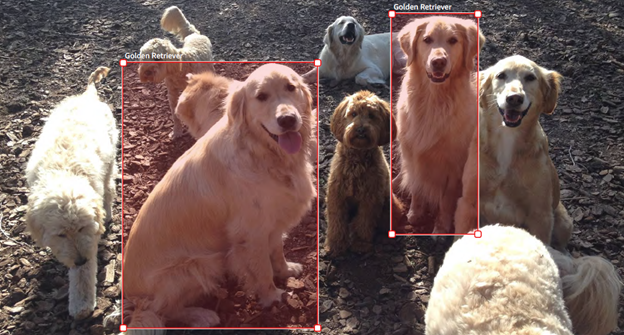From personal assistants such as Siri and Alexa, to customer service chatbots like nibby and recommendation engines on Netflix, the real-world applications of machine learning are extensive. In fact, machine learning is now proving an essential technology for many organisations and industries due to its ability to streamline processes, drive efficiencies and improve customer experiences.
But one of the most widely used types of machine learning, which has vast power and potential, is computer vision. Most commonly used for identity verification to unlock your smartphone or at airport border controls, computer vision is where a device and the software behind it attempt to see and understand the content of images and video.
However, computer vision can do much more than just facial analysis. For example, it can be used to identify objects, detect certain activities and monitor human behaviour. In many respects, the use cases of computer vision are only limited by your imagination.
One industry in which DiUS has used computer vision to great effect is mining, working alongside Solve Geosolutions to build Datarock – a machine learning-powered, cloud-based drill core image analysis platform that provides accurate, fast and consistent high-resolution information about a mineral deposit’s geology.
Another area with big potential for new business value is the combination of ML with local computing – Edge ML – to enable immediate responses in situations where milliseconds matter. Most commonly, Edge ML involves computer vision to enable use cases such as surveillance and monitoring as well many others including self-driving cars.
So how do you get started with machine learning and computer vision? Well, off-the-shelf solutions from Microsoft Azure (Computer Vision) and Google Cloud (Vision AI) don’t require extensive expertise. But recent improvements to Amazon Regoknition, such as the custom labels feature, make it an especially exciting proposition and worth a deeper look.
Best of all, you don’t need extensive machine learning expertise to get started with computer vision, as solutions like Amazon Rekognition does all the hard work for you. This off-the-shelf product uses proven, highly scalable deep learning technology to automate image and video analysis.
So what exactly is Amazon Rekognition? What are some of its capabilities and how could it benefit your business?
What is Amazon Rekognition?
Launched in 2016, Amazon Rekognition is a service that makes it easy to add image and video analysis to your digital product or service. It features the ability to identify objects, people, text, scenes, and activities, as well as detect any inappropriate content.
DiUS is no stranger to working with Amazon Rekognition. A few years ago, we had the opportunity to work on a project that demonstrated computer vision and leveraged Rekognition. We even published a blog about it, which explains the technical aspects of Rekognition – how it works, what it does well, and how it can be used in applications.
What are the capabilities of Amazon Rekognition?
Facial recognition
Facial recognition is perhaps the most common capability that Amazon Rekognition is used for, and computer vision as a whole. As AWS explains:
With Amazon Rekognition, you can get information about where faces are detected in an image or video, facial landmarks such as the position of eyes, and detected emotions (for example, appearing happy or sad). You can also compare a face in an image with faces detected in another image (face identification).
Seeing as AWS Recognition can analyse someone’s face against two seperate images – one in real life and the other from a database – it’s widely used for identity verification purposes.

Here are some industries where it’s either being rolled out right now, or has the opportunity to disrupt the status quo…
Use cases for facial recognition
- Retail and hospitality – Whether it’s keeping tabs on density limits or providing foot traffic analysis, there are various ways in which facial recognition can be used in retail and hospitality settings. And with the coronavirus pandemic forcing businesses to keep track of their customers, facial recognition can also help automate the check-in process. In China, cameras run a facial recognition algorithm to identify shoppers whenever they enter JD stores. It can even facilitate contactless buying when used in parallel with RFID tags.
- Transport and logistics – Self-driving cars have been the focus of facial recognition research in automotive and transport settings. For example, identity verification is being considered to unlock and start a vehicle for its owner. A similar system could also be used for logistics, where long-distance drivers are often required to verify their identity and prove they are the ones driving.
- Education – With the coronavirus pandemic putting paid to in-person examinations where invigilators must be present, the education industry has capitalised on technologies like Amazon Rekognition to verify identities and eliminate cheating. This brings us onto Rekogniton’s next capability…
Virtual Proctoring
Virtual proctoring allows people who are taking a test or examination to be virtually monitored via the webcam on their computer. Although this can include human observation, technologies such as Rekognition have opened the door for Artificial Intelligence and machine learning to provide automated support.


It’s possible to implement rules such as:
- Recognising the person who is taking a test
- Detecting the number of people present
- Detecting whether the person taking the test is receiving help from someone or something else
- Detecting objects of interest (such as a mobile phone)
Over the past 18 months, applications making use of Amazon Rekognition have enabled testing and examinations to continue while education institutions went online. However, this acceleration in adoption has also highlighted how virtual proctoring can provide added convenience to students while safely and securely meeting their needs.
Amazon Personal Protective Equipment (PPE)
Amazon Rekognition’s PPE detection feature can ensure employees are wearing the required PPE such as helmets, gloves and masks. For industries where workplace safety is a top priority, such as manufacturing, construction, food processing, chemical, healthcare, energy, and logistics, this reduces risk and provides unparalleled peace of mind.


What’s more, because of COVID-19 and the widespread use of face coverings to reduce the spread of the virus, Amazon Rekognition can help with the compliance of health guidelines and regulations.
Features and benefits of Rekognition PPE include:
- Automate PPE detection at scale
- Improve safety practices
- Full fidelity analysis response
- Custom PPE detection
Custom Labels
Custom labels represent what is arguably the most exciting aspect of Amazon Rekognition, and the feature that has the most potential. According to AWS:
With Amazon Rekognition Custom Labels, you can identify the objects and scenes in images that are specific to your business needs. For example, you can find your logo in social media posts, identify your products on store shelves, classify machine parts in an assembly line, distinguish healthy and infected plants, or detect animated characters in videos.
By creating a custom model that is specifically trained to detect objects or scenes that are specific to you and your business, the door is opened to endless possibilities.


We’ve identified the following use cases where custom labels can lead digital transformation efforts…
- Retail – Once again, retail is one industry that stands to gain a great deal from custom labels. For example, it could be used to identify products and detect brands on a shelf to help with personalised recommendations or inventory management.
- Agriculture – AWS gives the example of a tomato producer that needed to classify produce into six ripeness categories from mature green to red. Instead of doing so manually, it used custom labels to classify tomatoes based on their ripeness and integrated this solution into the packaging process.
- Media – Custom labels can make content more discoverable on digital platforms as it improves metadata. For example, Rekognition can automatically tag and label objects such as logos, characters, actors, scenes, and locations, which can then be indexed to make content searchable. This leads to more personalised recommendations and a better content discovery experience for users.
- Streamline operational tasks – Reduce human moderator efforts by up to 95% using Rekognition to automate repetitive and repeatable tasks. Amazon A2I can also be used to combine machine predictions and human review without the heavy lifting of building new tools and infrastructure.
- Reliable and cost-effective – Rekognition enables you to create reliable, scalable, and repeatable workflows without upfront commitments or expensive licenses. You simply pay based on the number of images or the duration of videos that you choose to process.
- Automate at scale – Amazon Rekognition is a fully managed service that can automatically scale up and down based on your business needs. You don’t need to build and manage your own ML infrastructure. You can quickly deliver reliable, scalable, and secure applications powered by computer vision.
- Reduce human and financial risk – Automatically maintain Rekognition detection records to comply with industry-specific rules or regulations and reduce the risk of penalties or fines.
- Improve processes and practices – Store and analyse results produced by Rekognition to inform and prioritise continuous improvement efforts.
What to consider with Amazon Rekognition
Amazon Rekognition enables you to hit the ground running with machine learning and computer video, thanks to out-of-the-box image and video analysis. Along with driving business value, it can also scale automatically without the need to build your own machine learning infrastructure.
Just bear in mind that as with any other machine learning solution, Amazon Rekogniton is only as good as the data you feed it. And while certain aspects of Rekognition don’t need machine learning experience, capabilities like custom labels require time, expertise and resources. This isn’t limited to technical practitioners either; experience designers are often essential to the successful implementation and deployment of machine learning solutions.
Here at DiUS, we specialise in both off-the-shelf products like Amazon Rekognition as well as custom solutions built to solve your problems or meet your specific needs. So to unlock the potential of machine learning at your organisation, get in touch with us today.

